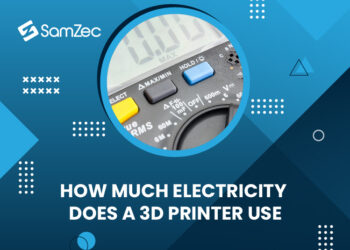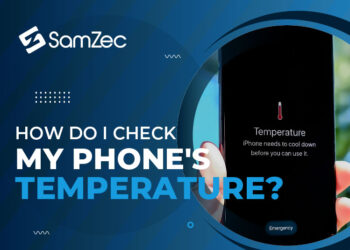A detailed surface scanner is a beneficial tool for businesses and individuals who want to get a closer look at the surface of an object. This type of scanner creates a three-dimensional image of the surface, which can be used for various purposes, such as creating a 3D print or measuring the dimensions of an object.
However, to get the most accurate results from your scanner, it is important to understand how to use it correctly.
A detailed surface scanner is used for detailed scanning of text, logos, etc. The scanner has high-performance OCR scanning and ID card recognition. In this blog, we will discuss how to use the detailed surface scanner.
Must Read: How to use data link scanner?
How to use a detailed surface scanner
Detailed surface scanner systems are designed to detect defects in the finishes of molded and fabricated parts. The most common applications include:
- Detecting surface texture and dimensional defects.
- Waviness and warpage.
- Measuring multidimensional complex irregular surfaces.
You can use a detailed surface scanner to check the optical consistency of a transparent plastic part, measure glass thickness, and check the surface profile of a piece made from translucent glass or plastic.
However, you should not use a detailed surface scanner to check the optical consistency of an opaque part, measure the thickness of a transparent plastic part, or measure the profile of an unclear part.
A detailed surface scanner (DSS) is an advanced technology that allows you to see an object’s surface to a microscopic level. The clear scan is used in healthcare, construction, manufacturing, history and archeology. The scan is created by passing a beam of light through the object.
The beam of light reflected in the surface produces a high-resolution, 3-D map of the object’s surface. The DSS is used in many industries but is best known for its use in archaeology, where it can reveal hidden details about ancient artifacts.
How to choose the right detailed surface scanner?
There are a few things to think about when looking for a detailed surface scanner. The size of the object you’ll be scanning is the first consideration. Some scanners can only handle little items, while others can handle larger ones. Second, you must determine the sort of scanner you require.
There are three types: optical, laser and computed tomography (CT). Optical scanners use light to capture an image of the object, while laser scanners use lasers to create a 3D image. CT scanners use X-rays to create a 3D image. The final factor you need to consider is your budget. Detailed surface scanners vary in price, so it is important to find one that fits your budget without compromising quality.
Benefits of Detailed Surface Scanner
Detailed Surface Scanner (DSS) has become indispensable for inspection and reverse engineering applications. The detailed information gained from surface scanning allows for very fine reconstruction of the scanned surface, which eases the task of reverse engineering. In addition, DSS can be used for quality control, reverse engineering, and damage assessment applications.
For example, the quality control application utilizes DSS to inspect or map a part or product. These scans allow for a detailed look at the surface quality, which could otherwise be undetected by routine visual inspection, resulting in a total failure of the part.
Conclusion:
We hope you enjoyed our article about using the detailed surface scanner. The detailed surface scanner can help you discover the details you need to know about your surroundings and see any issues that may need to be addressed in the future. By using this scanner, you can learn more about the thoroughness of your home and gain insight into any potential problems that may arise in the future.
FAQs
How do you use a detailed surface scanner on a ring?
A detailed surface scanner is a type of scanner used to scan the surface of a ring. The scanner is used to find the size of the ring, the type of the ring and the material of the ring. These scanners are so accurate that jewelers use them.
How do I move my surface scanner?
You can move your Surface Scanner by simply dragging the cursor on top of the scanner and then moving it over to the room you want to scan.




















